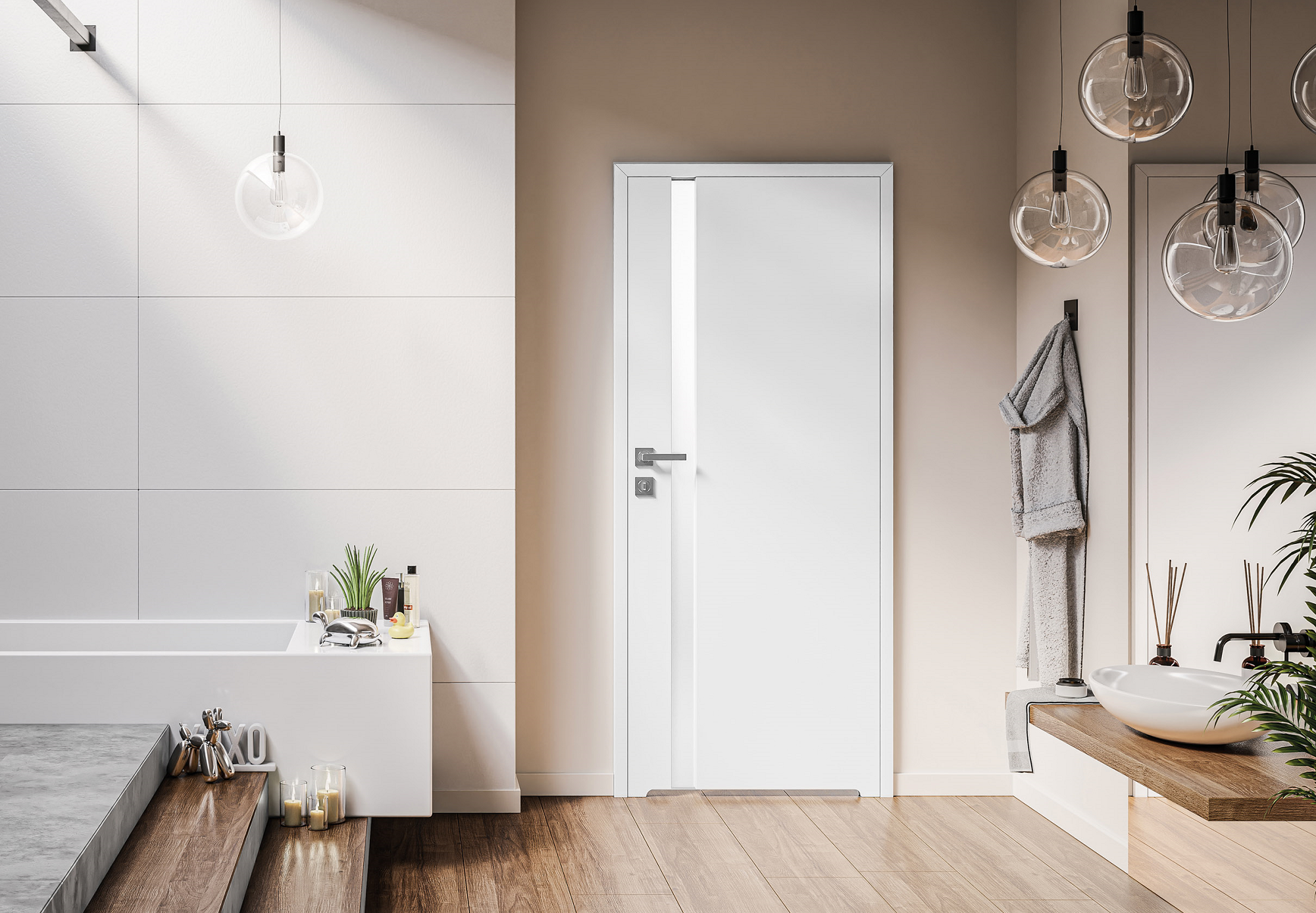Proper ventilation is a key issue for a room such as a bathroom. High temperatures and high air humidity are the factors that create a specific microclimate there. In order to ensure safe use of the bathroom, the choice of bathroom door must not be based solely on aesthetic considerations. Below we answer the questions regarding the type of bathroom door that should be chosen so that free air circulation is possible and the number of ventilation sleeves that should be in the bathroom door. Read the advice of our experts!
What does the construction law say about bathroom doors?
The construction law clearly defines what requirements bathroom doors should meet. In addition to such important issues as specifying their width (at least 80 cm), height (2 metres) or direction of opening (outwards), it addresses the issue of ventilation. Proper air circulation is a key factor affecting the safe use of the bathroom and the health of the residents. A poorly ventilated room causes mould and fungi to appear on the walls, which are dangerous to our respiratory system. What’s more, if bathroom doors are exposed to steam for a long period of time, they can warp, and as a result, get damaged. In addition to justification of the above, the construction law also provides practical explanation. In many households, gas boilers are still used in bathrooms. Openings in the door are a last resort in the event of a failure of such an installation, during which gas is released. The legal requirements clearly state what the surface area of the ventilation openings should be. It is a minimum of 220 cm2 of the total surface area of the door.
Overview of ventilation solutions for bathroom doors
When deciding to purchase a bathroom door, we have four solutions to choose from, which will ensure comfortable use of this room. The oldest and still the most popular solution is the ventilation grille, installed at the bottom of a door leaf. Its size perfectly meets the requirements of the construction law. It is enough that its size is 44 cm by 5 cm, although the standard size is 44 cm by 12 cm. The main disadvantage of such a solution is its unsightly appearance. Moreover, dirt and dust tend to settle on the grille, which requires additional time and effort to bring it to a state of relative cleanliness.
A very good alternative to the popular grille is an unobtrusive ventilation undercut, located at the bottom edge of the door. This creates a gap that ensures adequate ventilation and free air flow, provided that the undercut is at least 2.5 cm high and extends over almost the entire width of the door. However, in order to meet the requirement of 220 cm2 for a standard 80 cm wide door, the undercut should be 2.75 cm high. Ventilation undercut is an extremely aesthetically pleasing solution for modern and minimalist interiors, although it will also work well in rooms arranged in classic style.
Frequently used solutions also include ventilation sleeves, which are round holes located at the bottom of a door leaf. Thanks to the decorative caps, they are an aesthetically pleasing solution, although unfortunately often insufficient for adequate air flow between the bathroom and the adjoining room. It is not uncommon to see four small openings that are unable to perform their function properly.
The latest and most innovative method are ventilation slots. These are subtle cut-outs across the entire surface of the door, positioned at almost 80% of their width, which gives a quite large area for air flow. They are a perfect combination of a solution ensuring air circulation and a sense of privacy. The slots have been thought out in such a way that it is not possible to look through them into the bathroom.
How many ventilation sleeves in a bathroom door?
The answer to the above question is not definite. It will be influenced by, for example, the dimensions of the door. It is worth remembering that safety issues are the most important thing and our sense of aesthetics should take a back seat when we are choosing doors with ventilation sleeves. However, a compromise between the number of sleeves and the elegant appearance of the door leaf is possible. The larger the diameter of the opening and thus its surface area, the fewer sleeves will be needed. If you want the sleeves to be aligned, we should choose a door with larger openings. If the diameter is 75 mm, 5 sleeves will be needed, and when the diameter of the opening is increased to 84 mm – only 4. In both cases, the required 220 cm2 of ventilation area is provided.
Proper ventilation has many benefits, so it is worth following the construction law regulations and complying with the requirements contained therein. This will help us to avoid the problem of damp walls, towels that do not dry, stuffiness in the room, as well as unwanted mould and fungi appearing on the walls and ceilings.

